7 Native American Dishes That Are Less Known And 9 Timeless Recipes That Honor Cultural Roots

Explore a rich tapestry of Native American cuisine with a journey through seven lesser-known dishes and nine timeless recipes that honor cultural roots. This collection highlights the diversity and depth of Indigenous culinary traditions across various tribes, offering a flavorful exploration of history and heritage. From the tart sweetness of Wojapi to the comforting warmth of Hominy and Bean Stew, each dish tells a story of resilience, adaptation, and celebration. With exacting attention to detail, the following sections unveil the unique flavors and cultural significance of each dish, inviting readers to savor the essence of Native American cooking.
1. Wojapi (Dakota/Lakota)

Wojapi, a cherished Dakota/Lakota dish, is a thick berry sauce bursting with flavor. Made from chokecherries or blueberries, it’s naturally sweet and tart. A staple in many Native American households, Wojapi is traditionally served with bread or meat. Its simplicity belies the depth of its taste—a rich blend of berries cooked down to perfection.
Imagine a gathering where families share this vibrant sauce, dipping freshly baked bread into its luscious depths.
This dish isn’t just food; it’s a celebration of community and nature’s bounty, a reflection of the Dakota/Lakota connection to their land.
2. Chilmole (Maya/Yucatec)

Chilmole, sometimes called ‘black mole,’ is a deep, complex dish from the Maya/Yucatec culture. Its unique flavor profile comes from charred chilies and an intricate blend of spices, creating an exquisite, smoky taste.
For generations, this stew has been a ceremonial centerpiece, embodying the richness of Mayan culinary artistry.
Picture the aroma wafting through ancient temples, mingling with the air of a bustling marketplace. Chilmole isn’t just a meal; it’s a journey through time, echoing the vibrant legacy of the Maya/Yucatec spirit.
3. Acorn Mush (California Tribes)
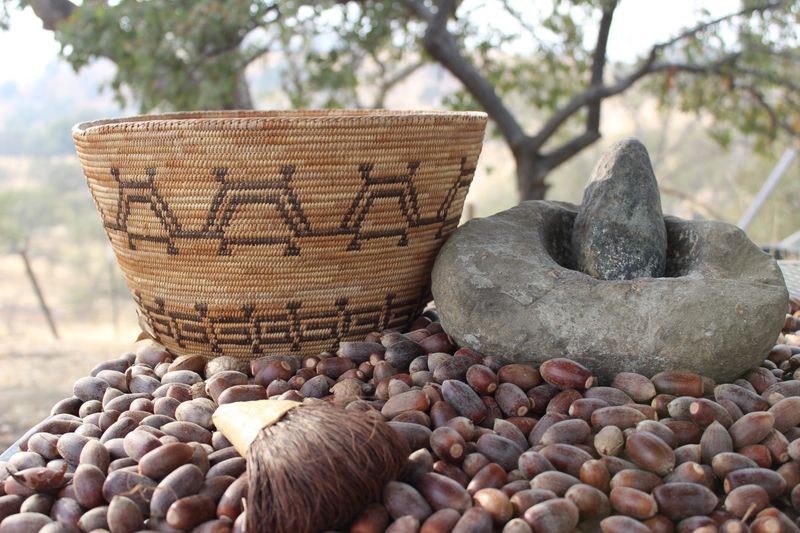
Acorn Mush is an age-old dish cherished by California tribes. Made by leaching bitterness from ground acorns, it transforms into a thick, satisfying porridge.
Imagine the dedication required to prepare this dish, reflecting the ingenuity and resourcefulness of its creators.
Often served during community gatherings, Acorn Mush holds a special place in the hearts of those who cherish their ancestral roots. It’s a testament to the harmony between people and nature, a nutritious offering that’s as much about tradition as taste.
4. Sobaheg (Tewa/Hopi)
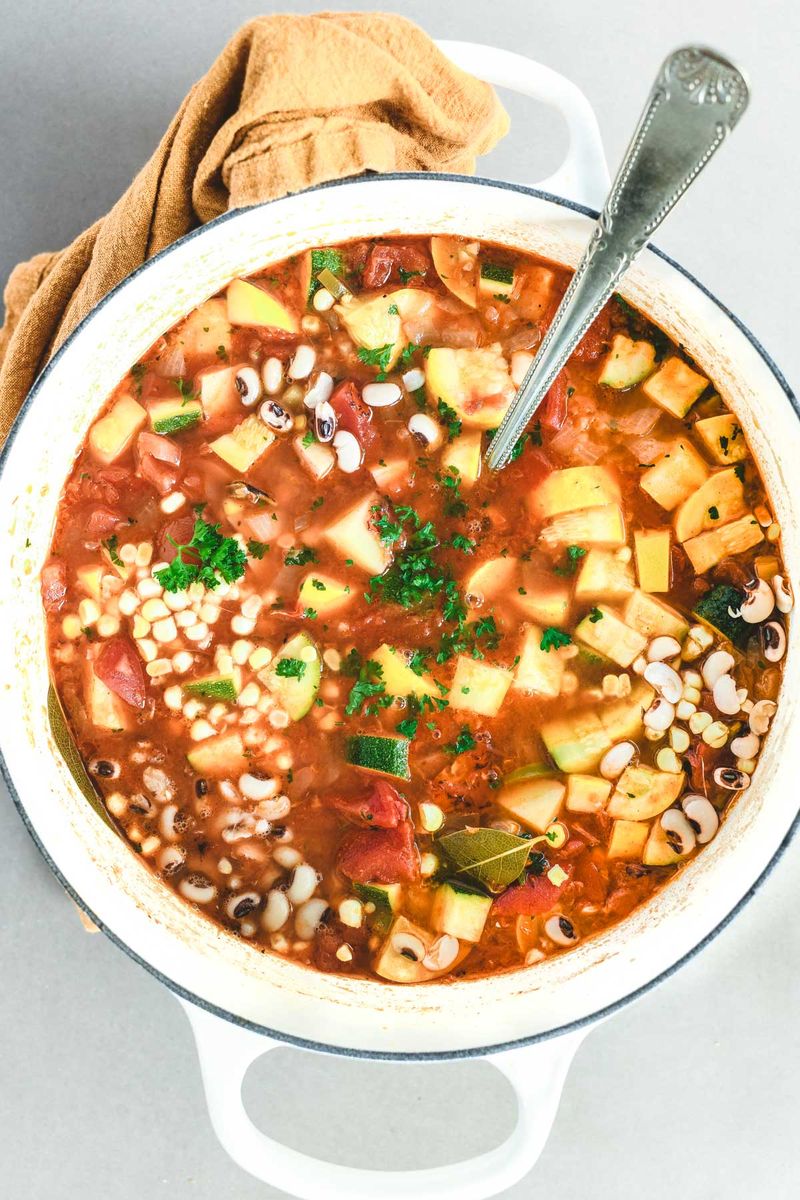
Sobaheg is a comforting stew from the Tewa and Hopi tribes, blending hominy, beans, squash, and sometimes meat into a nourishing dish. This slow-cooked masterpiece draws on seasonal ingredients, celebrating the bounty of the land.
Picture a cold winter day, where a pot of Sobaheg warms the soul and body. Shared among family, it brings a sense of togetherness and history.
In every spoonful, Sobaheg offers a taste of the past, a reminder of the Tewa and Hopi’s deep-rooted connection to their cultural and natural heritage.
5. Salmon Candy (Pacific Northwest Tribes)
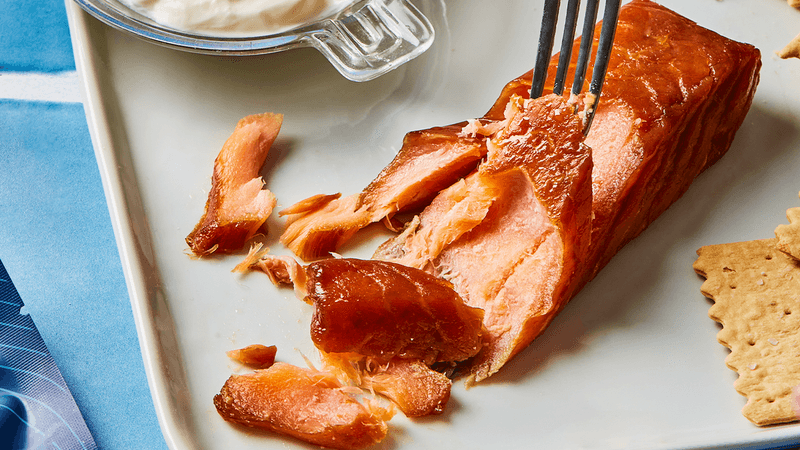
Salmon Candy, a delicacy from the Pacific Northwest tribes, combines cured, smoked salmon with a sweet glaze of maple or honey. This chewy, flavorful snack is a true testament to the region’s rich fishing traditions.
Imagine the process of preparing this treat, honoring centuries of fishing expertise and community collaboration.
As the smoky, savory-sweet aroma fills the air, it brings memories of gatherings where stories are shared over bites of this unique jerky. Salmon Candy is more than a snack—it’s a bridge between past and present.
6. Three Sisters Soup (Various Tribes)
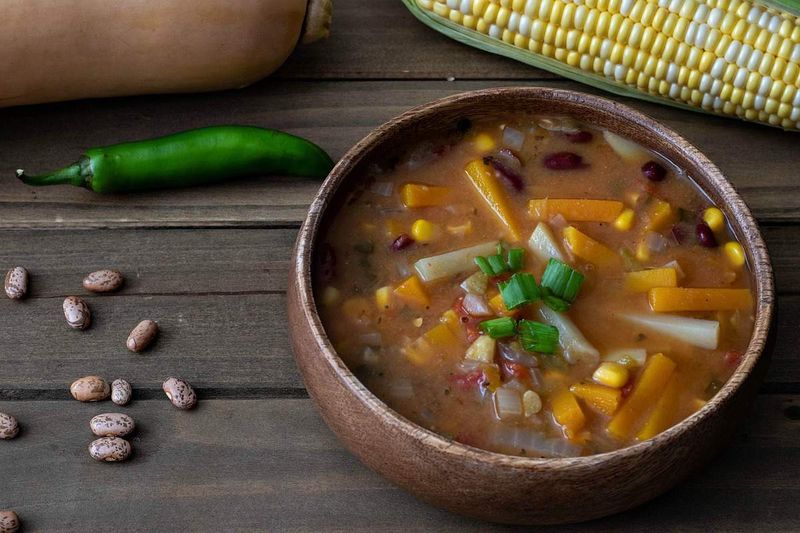
Three Sisters Soup is a vibrant dish combining corn, beans, and squash, known as the ‘Three Sisters’ among various tribes. This trio grows harmoniously together, reflecting the interconnectedness central to Native American philosophy.
Envision the preparation of this soup, where each ingredient complements the others, creating a harmonious blend of flavors.
It’s a dish that not only nourishes the body but also embodies the spirit of cooperation and sustenance. Three Sisters Soup is more than a meal; it’s a celebration of agricultural wisdom and cultural unity.
7. Piki Bread (Hopi)
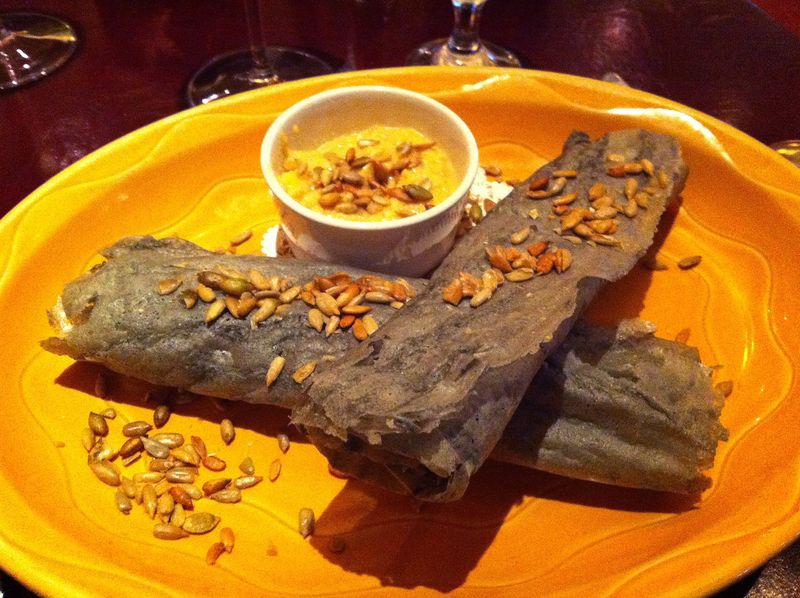
Piki Bread, a Hopi delicacy, is a paper-thin bread made from blue corn. Its delicate, almost translucent texture is a testament to the skill required to create it.
Imagine the centuries-old tradition of baking Piki on a heated stone, where generations of Hopi women have perfected this art.
The process is as much a part of the bread’s charm as its unique taste. Piki Bread is a symbol of cultural continuity, a culinary art form passed down through the ages, embodying the essence of Hopi life and tradition.
8. Frybread
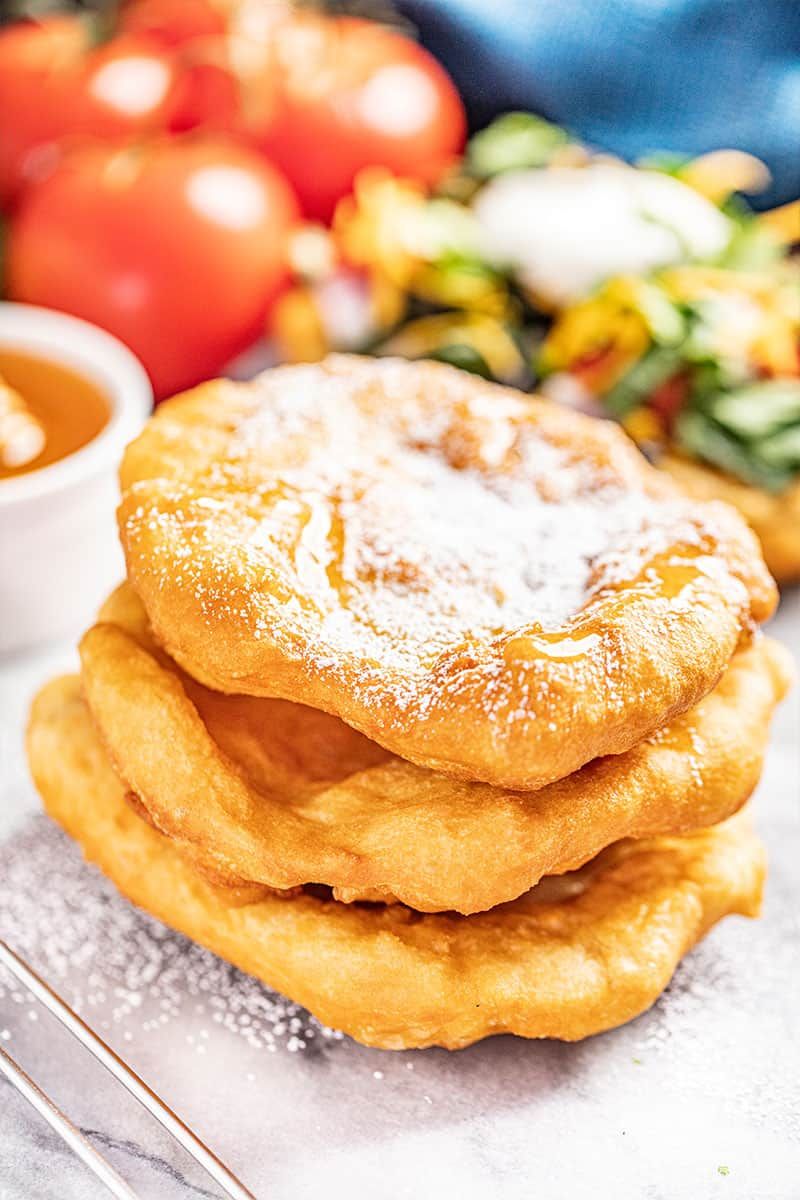
Frybread, a dish born from adversity, has become a beloved symbol of resilience in many Native communities. Its origins trace back to government rations, yet it’s been embraced and transformed into a culinary icon.
Frybread’s crispy exterior and soft, airy interior make it versatile, whether enjoyed alone or as a base for various toppings.
This dish stands as a testament to the strength and adaptability of Indigenous people, turning hardship into celebration. Frybread is more than food; it’s a cultural emblem that resonates with history, survival, and joy.
9. Navajo Tacos

Navajo Tacos are a delicious fusion of tradition and modern flavors, built on a foundation of Frybread. Piled high with beans, meat, lettuce, and cheese, they offer a hearty and satisfying meal.
Picture a bustling fair or gathering, where the aroma of sizzling meat and fresh ingredients fills the air.
Navajo Tacos represent the creativity and adaptability of Indigenous cuisine, blending tradition with contemporary tastes to create something truly special. Each bite is a nod to the past, with a flavorful twist that delights today’s palate.
10. Posole (Pueblo Tribes)
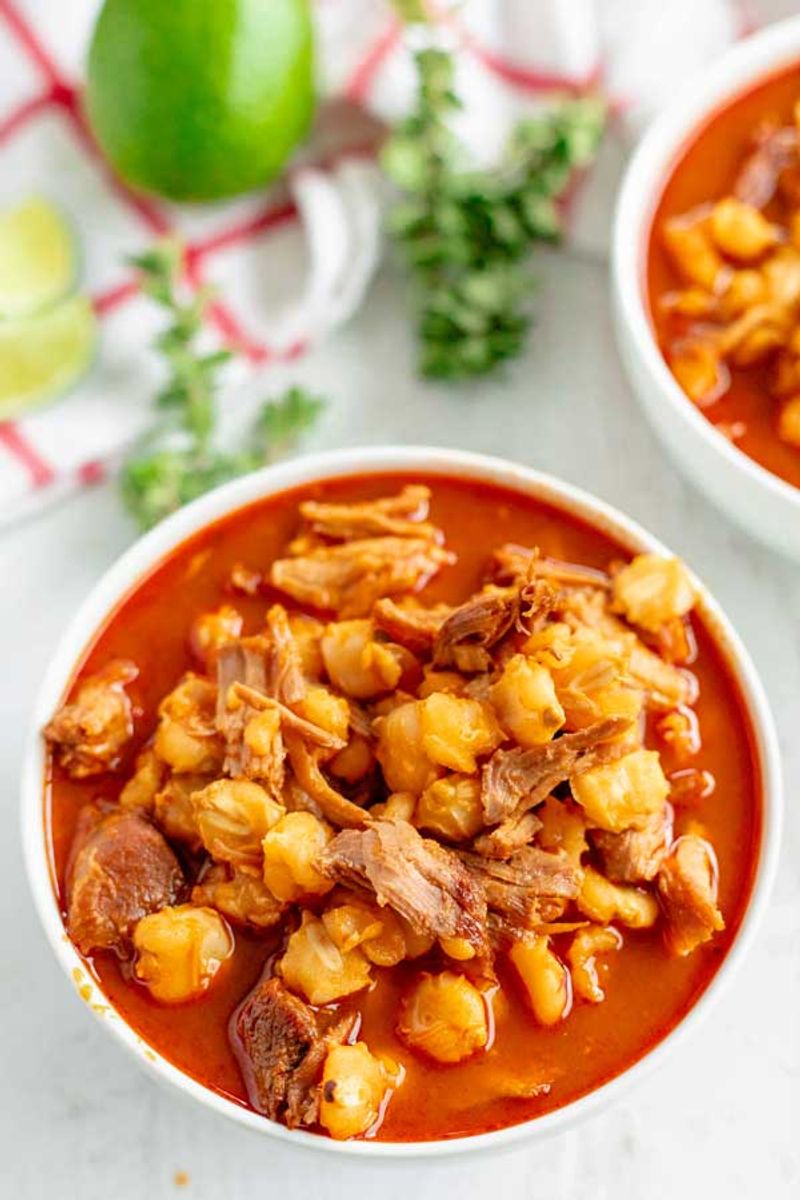
Posole, a hearty hominy-based stew from the Pueblo tribes, is a dish steeped in tradition and flavor. With pork, chili, and garlic, it provides a comforting and bold culinary experience.
Imagine a family gathering where this rich stew simmers slowly, filling the home with warmth and aroma.
Posole is more than just a meal; it’s a cherished tradition, served during feasts and celebrations. Deeply nourishing, it symbolizes community, heritage, and the joy of shared meals.
11. Cornbread (Traditional Stone-Ground)

Traditional stone-ground Cornbread is a staple across many tribes, offering a taste of history in every bite. Made from heirloom cornmeal, it’s often baked over an open fire or in clay ovens.
Picture the rustic simplicity of this dish, a warm, golden slice that embodies the essence of Native culinary practices.
Cornbread’s hearty texture and rich flavor provide comfort and nourishment, making it a beloved addition to any meal. It stands as a testament to the enduring connection between land and table, savoring the legacy of Indigenous agriculture.
12. Bison Stew
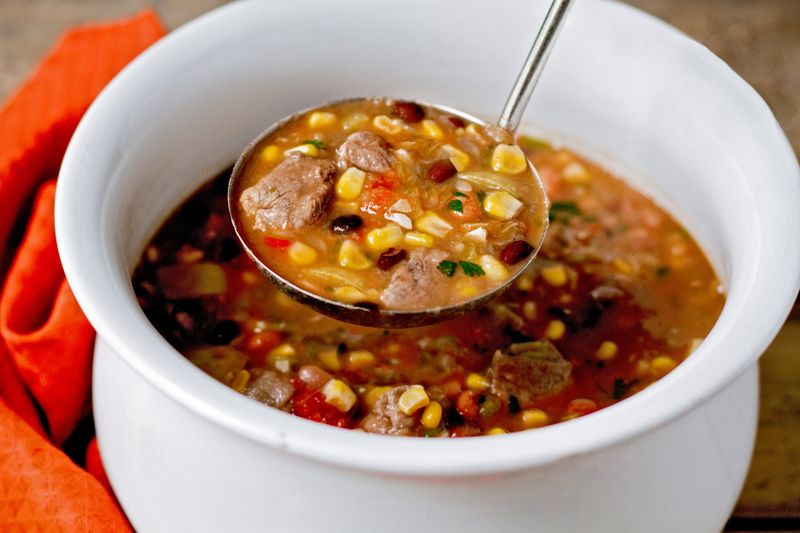
Bison Stew is a hearty dish central to Plains tribes, rich with history and flavor. High in protein and low in fat, bison meat offers a nutritious alternative to beef.
Imagine the distinct taste of tender bison, cooked with root vegetables and traditional herbs, creating a stew that warms both body and soul.
Bison Stew is more than a meal; it’s a celebration of Plains culture, honoring the animal that has sustained generations. As Indigenous kitchens embrace this dish anew, it bridges past and present with every bite.
13. Wild Rice with Mushrooms and Berries (Ojibwe)

Wild Rice with Mushrooms and Berries is an Ojibwe dish that showcases the beauty of the forest. Hand-harvested wild rice combines with mushrooms and berries for a harmonious blend of flavors.
Imagine the vibrant colors and textures that make this dish a feast for the senses. It embodies the connection between people and nature, celebrating the bounty of the land.
This dish isn’t just nourishment; it’s a tribute to the resourcefulness and creativity of the Ojibwe, turning natural abundance into a culinary masterpiece.
14. Blue Corn Pancakes (Southwest Tribes)

Blue Corn Pancakes are a delightful breakfast treat from Southwest tribes, made with blue cornmeal rich in flavor and fiber. Often sweetened with agave or honey, they offer a nutritious start to the day.
Picture a sunlit morning where these pancakes are served, their unique taste and texture delighting the palate.
Blue Corn Pancakes are more than just food; they’re a celebration of Southwestern agricultural traditions, offering a hearty and flavorful connection to the land.
15. Venison Roast with Juniper and Sage
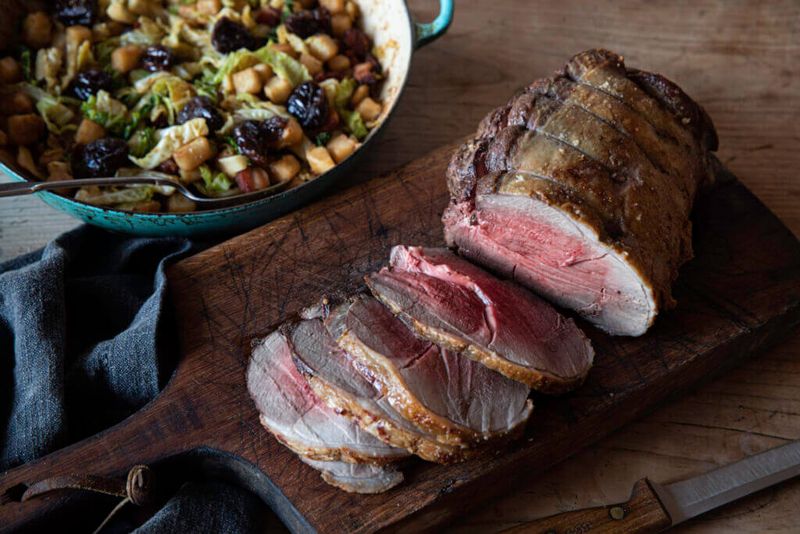
Venison Roast with Juniper and Sage is a dish steeped in tradition, offering a taste of the wild. Venison, a staple protein, becomes a gourmet feast when roasted with native herbs.
Envision the rich, aromatic flavors melding together, creating a dish that honors the hunting traditions of various tribes.
This roast is more than sustenance; it’s a connection to ancestral ways, a celebration of nature’s offerings, and a testament to culinary artistry.
16. Hominy and Bean Stew

Hominy and Bean Stew is a nourishing dish often used in celebration or ceremony. Combining protein-packed beans and corn, it offers a soul-warming experience.
Imagine a pot bubbling away on the hearth, filling the room with a rich, inviting aroma. This stew is a staple in many Native American gatherings, symbolizing unity and abundance.
It’s more than just a dish; it’s a reflection of tradition, community, and the enduring spirit of sharing meals, keeping cultural roots alive.
